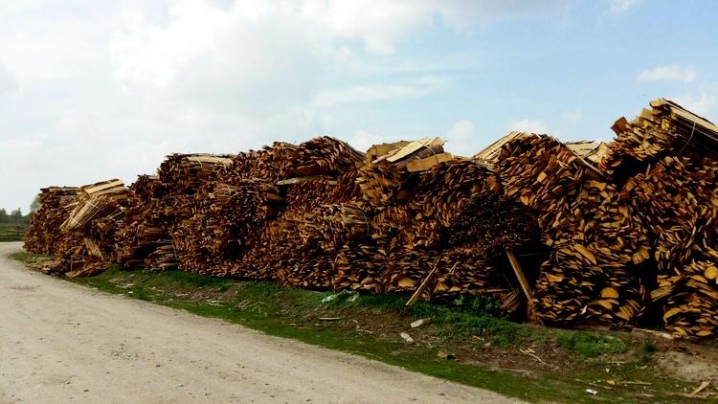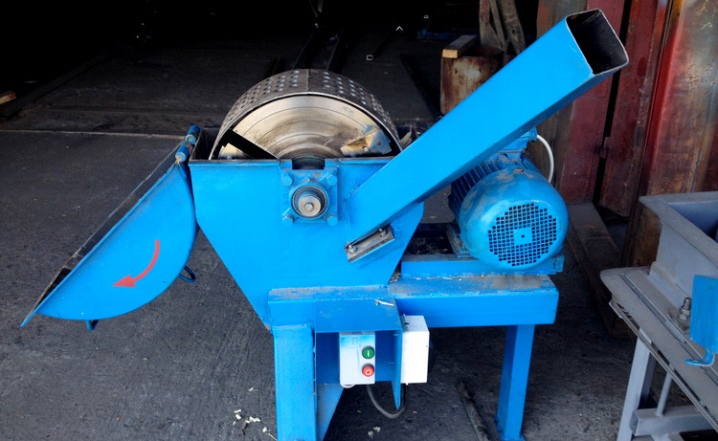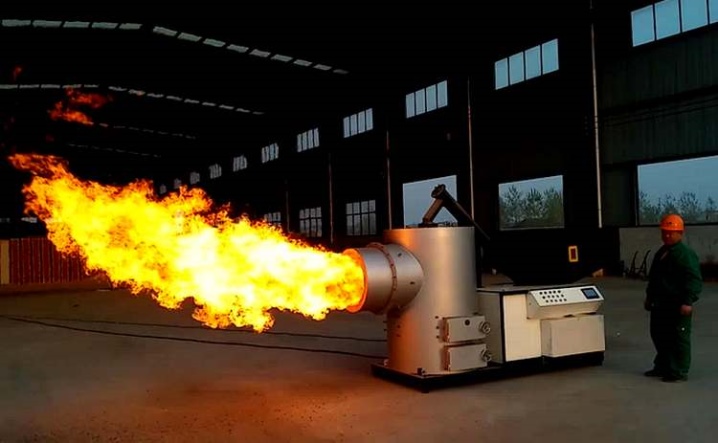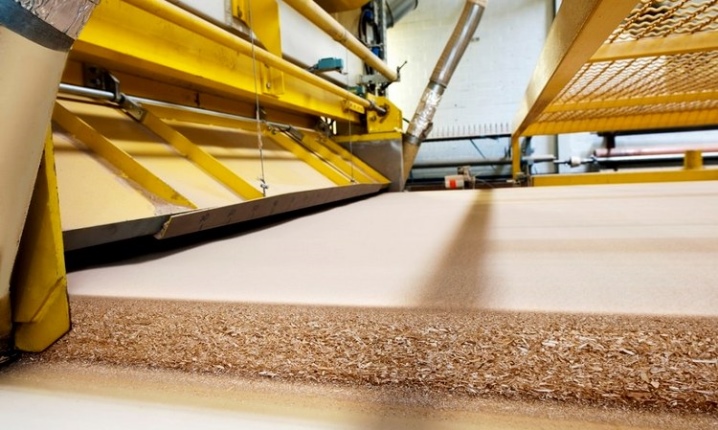Wood waste disposal

Thanks to the possibilities of the modern world, waste from wood processing does not rot in a landfill or in an open field, but is sent to the manufacture of new products that are in great demand by consumers. Moreover, wood production today occupies a leading position, and if every enterprise leaves shavings and sawdust, there will be no place in the world for life.

What is waste?
Wood was, is and will be the most demanded natural material used by humans in various fields of activity. However, during its processing and the subsequent manufacture of various products, wood waste remains, which must be recycled or disposed of. For these purposes, processing plants were built, the main purpose of which is to care for the environment and people.

Surely many men remember how in labor lessons they sawed and planed pieces of wood, creating a certain product from them. And at every stage of work, especially after sawing wood, garbage was collected in the form of shavings, sawdust and scraps. About the same, but on a large scale, waste appears in large-scale wood processing industries. And we must get rid of them.
Waste generated in the process of wood processing is divided into several types:
- needles and foliage;
- bark;
- stump with rhizome;
- sawdust;
- shavings and chips.

When felling timber, all the types of waste presented are often left in place, although this cannot be done. Rotting wood is the best environment for the development of pests. Some lumberjacks still shovel the waste into a heap and set it on fire. However, this method of disposal cannot be called effective either.... First, the smoke from combustion pollutes the atmosphere. Secondly, in windy weather, even a small fire can turn into a huge forest fire.

For the convenience of work, recycling plants have divided wood waste into groups, making it easy to determine the method of secondary processing or disposal.
|
Description |
Products related to the group |
|
|
1st group |
Boards after initial sawing |
Humpbacks |
|
2nd group |
Defective product |
Logs cut in any direction |
|
3rd group |
Construction Materials |
Chipboard, fiberboard, veneer, plywood |
|
4th group |
Secondary base of building materials |
Shavings, bark, sawdust |
Disposal methods
Many are sure that disposal is necessarily the destruction of an item.... In terms of considering wood waste, recycling means recycling and subsequent use as a base element for various materials, objects and things.

To date, 3 groups of methods for processing wood waste have been developed, the choice of a specific option depends on the characteristics of the raw material:
- biological;
- mechanical;
- chemical.
Biological methods involve the processing of low-quality raw materials. Waste is loaded into a special container, where elements that promote fermentation are added. As a result of synthesis, a high-quality fertilizer is obtained.

Mechanical methods of wood processing involve the use of various machines capable of breaking wood fibers. Wood scraps are turned into shavings and sawdust, which are then used to create building materials.

Chemical methods are the most difficult. This group includes areas such as pyrolysis, hydrolysis and gasification. The choice of a particular option depends on the state of the waste and the desired end result.
- Pyrolysis involves placing individual pieces of wood waste in a drying compartment where there is no air. When exposed to high temperatures, raw materials are separated into liquid, solid and gaseous states. Coal will be hard in this case. This product is removed from the drying compartment as it is likely to catch fire. The gaseous state, separated from the waste, will pass through the condensing units. And the liquid derivative will be aimed at creating resinous products.

- Hydrolysis, in contrast to pyrolysis, is carried out at a lower temperature. Waste is placed in a boiler, heated with steam, diluted with sulfuric acid, after which the raw material gradually becomes solid and liquid. The solid is lignin, and the liquid is monosaccharides and furfural.


- If wood waste is not suitable for creating other products, they are sent to gasification... This process helps to extract energy from the combustion of wood. The raw material is laid out in a compartment where air enters only from one side. The waste burns, and the evolved gas escapes from the other side relative to the air passage.

Processing equipment
A lot of units and machines are installed at processing plants, among which the most common is the grinder. This device is available in all wood waste recycling companies. It turns pieces and cuttings of wood into sawdust, shavings or dust.

It should be noted that for any method of disposal and processing, grinding is the primary step. And then the received fraction is redirected to other devices.
- Knife grinder.
With the help of a shredder, present in the design of this device, chips of the required size are obtained. The knives rotate, respectively, the wood raw material is shredded. In industrial production, crushers with different power and throughput are installed. With their help, it is possible to process raw materials containing metals.

- Hammer crusher.
This unit processes wood waste by hitting reinforced hammers, which are activated by the action of a rotating disc. This chipper crushes solid tree trunks with ease. But the most important thing is that this equipment does not leave behind wood residues.

- Bake.
Quite an old way to destroy wood waste. And the heat obtained after processing is used as heating and water heating. The design of such furnaces is tapered. In the upper part there is a heat sink that transfers heat to the storage chamber, inside there is a compartment with a grate, where wood raw materials are placed.

- Machine tools.
In the production halls of processing plants, there are multiple machines, each of which allows you to turn waste from primary wood processing into a new product.

|
Machine name |
The essence of the work |
Product used |
|
Stern |
Cutting off the top layer of wood to obtain shavings |
Veneer |
|
Milling |
Slotting |
Smooth timber |
|
Peeling |
Wood processing without receiving shavings |
Veneer |
|
Barking |
Removing the bark |
Trunk and bark |
What are they making?
Waste from primary wood processing is used in agriculture, construction and other areas of activity. Even self-taught cooks smoke meat on wood waste. But this is only a small part of what can be made from ordinary shavings and sawdust.

In countries with cool and cold climates, the first place is the processing of wood waste into fuel. The best solution for heating a house is coal and firewood. But fuel briquettes are created from pressed sawdust, which can be used to heat a fireplace, a bathhouse and even a barbecue!

Organic wood fillers are also the basis of many building materials, such as wood blocks, wood concrete and fiber boards. Small buildings of an economic type, garages are being erected from them.
Sawdust and shavings are the basis of chipboard, fiberboard, plywood. For their manufacture, the waste is combined with binding components, after which it is pressed on special equipment.

In addition, furniture manufacturers have found use for wood waste. Chips, sawdust and dust, when properly combined with chemical components, give the finished product the appearance of natural wood. Such products do not burst, do not crack, do not rot. It is possible to distinguish a product made from a natural piece of wood from processed products only at cost.

Recycled wood waste is widely used in agriculture... They make compost and fertilizers, use them as soil mulch. Sawdust and shavings are quality bedding for livestock. This waste absorbs moisture and prevents the spread of unpleasant odors inside the room. This characteristic also came to the liking of the owners of cats and rodents.


For more information on how wood waste is disposed of, see the video below.













The comment was sent successfully.